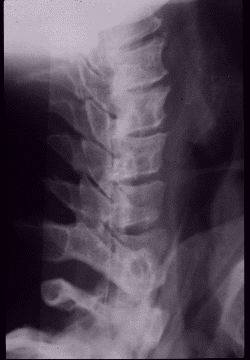- What is Cervical Spondylosis
- Statistics on Cervical Spondylosis
- Risk Factors for Cervical Spondylosis
- Progression of Cervical Spondylosis
- Symptoms of Cervical Spondylosis
- Clinical Examination of Cervical Spondylosis
- How is Cervical Spondylosis Diagnosed?
- Prognosis of Cervical Spondylosis
What is Cervical Spondylosis
Cervical Spondylosis is the most common disorder of the cervical spine. It is caused by degenerative changes in the vertebrae and intervertebral discs that occur as a result of ageing or due to injury or rheumatoid disease. In advanced disease this may lead to cervical spondylotic myelopathy (CSM) which results from compression of the spinal cord.
Statistics on Cervical Spondylosis
CSM is probably the most common spinal cord disorder in people over 55 years of age in the world. As the number of elderly people increases, the incidence of CSM will probably also increase.
Risk Factors for Cervical Spondylosis
Cervical spondylosis appears to be primarily a disease of aging. Characteristic changes on spinal x-rays are present in the majority of people aged over 70 years.
Progression of Cervical Spondylosis
A number of factors are responsible for the development of the signs and symptoms of cervical spondylosis:
- Osteophytes (bony growths)
- A narrowed spinal canal present since birth
- Degeneration of the intervertebral discs
- Changes in the spinal cord and nerves due to insufficient blood supply.
How is Cervical Spondylosis Diagnosed?

Prognosis of Cervical Spondylosis
A variety of factors determine success after surgery. Factors that may be suggestive of a less satisfactory outcome include: severe neurological symptoms before surgery, evidence of spinal cord shrinkage on MRI, and severe cord compression seen on x-rays.
All content and media on the HealthEngine Blog is created and published online for informational purposes only. It is not intended to be a substitute for professional medical advice and should not be relied on as health or personal advice. Always seek the guidance of your doctor or other qualified health professional with any questions you may have regarding your health or a medical condition. Never disregard the advice of a medical professional, or delay in seeking it because of something you have read on this Website. If you think you may have a medical emergency, call your doctor, go to the nearest hospital emergency department, or call the emergency services immediately.







